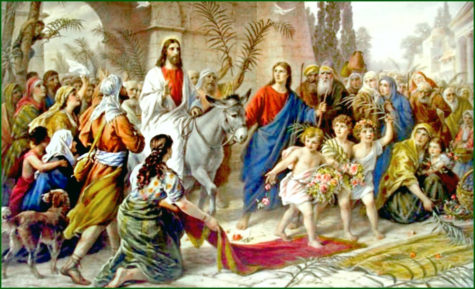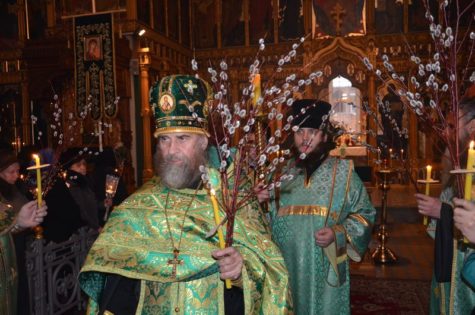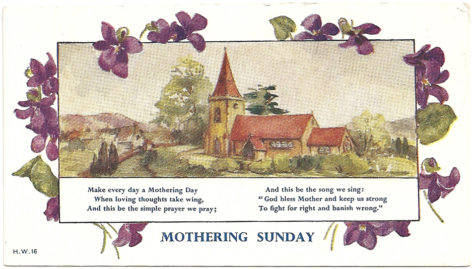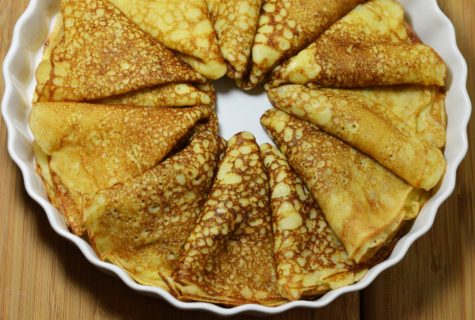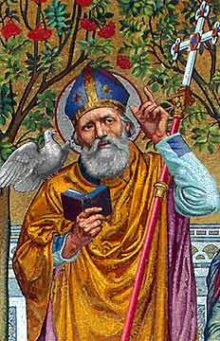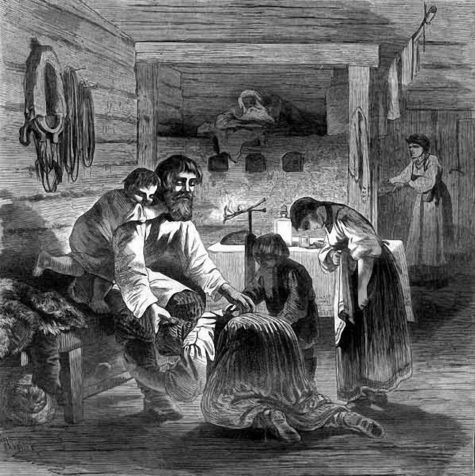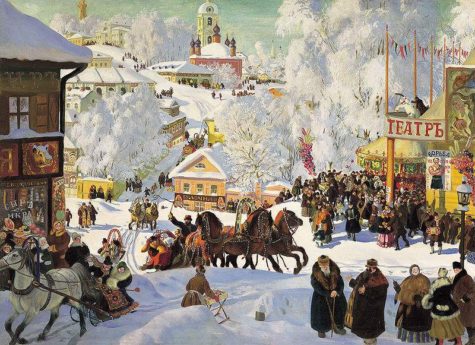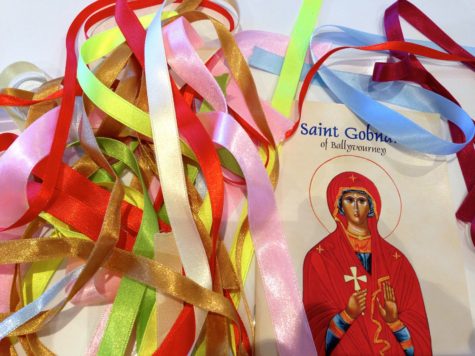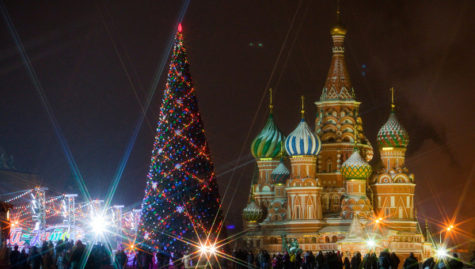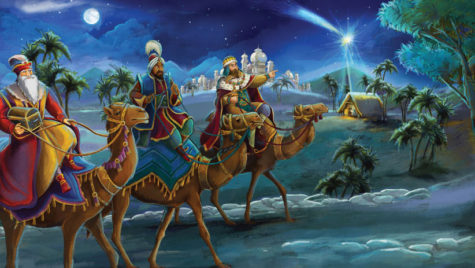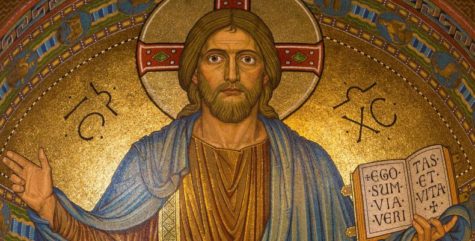Catholic
Palm Sunday is a Christian moveable feast that falls on the Sunday before Easter. The feast commemorates Jesus’ triumphal entry into Jerusalem, an event mentioned in each of the four canonical Gospels.
In many Christian denominations, worship services on Palm Sunday include a procession of the faithful carrying palms, representing the palm branches the crowd scattered in front of Jesus as he rode into Jerusalem. The difficulty of procuring palms in unfavorable climates led to their substitution with branches of native trees, including box, olive, willow, and yew. The Sunday was often named after these substitute trees, as in Yew Sunday, or by the general term Branch Sunday.
In the Greco-Roman culture of the Roman Empire, which strongly influenced Christian tradition, the palm branch was a symbol of triumph and victory. It became the most common attribute of the goddess Nike or Victory. For contemporary Roman observers, the procession would have evoked the Roman triumph, when the triumphator laid down his arms and wore the toga, the civilian garment of peace that might be ornamented with emblems of the palm.
Although the Epistles of Paul refer to Jesus as “triumphing”, the entry into Jerusalem may not have been regularly pictured as a triumphal procession in this sense before the 13th century. In ancient Egyptian religion, the palm was carried in funeral processions and represented eternal life. The palm branch later was used as a symbol of Christian martyrs and their spiritual victory or triumph over death.
Variations of the traditional observances:
In Latvia, Palm Sunday is called “Pussy Willow Sunday”, and pussy willows – symbolizing new life – are blessed and distributed to the faithful. Children are often awakened that morning with ritualistic swats of a willow branch.
In Bulgaria, Palm Sunday is known as Tsvetnitsa (tsvete, “flower”) or Vrabnitsa (varba, “willow”), or Flower’s Day. People with flower-related names (e.g., Lilia, Margarita, Nevena, Ralitsa, Rosa, Temenuzhka, Tsvetan, Tsvetana, Tsvetelin, Tsvetelina, Tsvetko, Violeta, Yavor, Zdravko, Zjumbjul, etc.) celebrate this day as their name day.
In Finland, it is popular for children to dress up as Easter witches and go door to door in neighborhoods for coins and candy. This is an old Karelian custom called Virpominen.
In the 15th through the 17th centuries in England, Palm Sunday was frequently marked by the burning of Jack-‘o’-Lent figures. This was a straw effigy which would be stoned and abused on Ash Wednesday, and kept in the parish for burning on Palm Sunday. The symbolism was believed to be a kind of revenge on Judas Iscariot, who had betrayed Christ. The effigy could also have represented the hated figure of Winter, whose destruction prepares the way for Spring.
In Oriental Orthodox churches, palm fronds are distributed at the front of the church at the sanctuary steps, in India the sanctuary itself having been strewn with marigolds, and the congregation proceeds through and outside the church.
In the Church of Pakistan (a member of the Anglican Communion), the faithful on Palm Sunday carry palm branches into the church as they sing Psalm 24.
In many Protestant churches, children are given palms, and then walk in procession around the inside of the church.
In Hoegaarden, Belgium one of the last remaining Palm Sunday processions takes place every year. A fellowship of Twelve Apostles carries a wooden statue of Christ around the town, while children go door to door offering the palms (box) for coins.
In Italy, palm leaves are used along with small olive branches, readily available in the Mediterranean climate. These are placed at house entrances (for instance, hanging above the door) to last until the following year’s Palm Sunday. For this reason, usually palm leaves are not used whole, due to their size; instead, leaf stripes are braided into smaller shapes. Small olive branches are also often used to decorate traditional Easter cakes, along with other symbols of birth, like eggs.
When Christianity came to Lithuania, the plants which sprouted earliest were honored during spring feasts. The “verba” or “dwarfed spuce” is used instead. According to tradition, on the Saturday before Palm Sunday the Lithuanians take special care in choosing and cutting well-formed branches, which the women-folk decorate with flowers. The flowers are meticulously tied onto the branches, making the “Verba”
In the Saxon regions of the Netherlands, crosses are decorated with candy and bread, made in the form of a rooster. In the Diocese of Groningen-Leeuwarden, a great procession with oil lamps is held the night before Palm Sunday in honor of the Sorrowful Mother of Warfhuizen.
Many Polish towns and villages (the best known are Lipnica Murowana in Małopolska and Łyse) organize artificial palm competitions. The biggest of those reach above 30 meters in length; for example, the highest palm in 2008 was 33.39 meters.
In Elche, Spain, the location of Palmeral of Elche (the biggest palm grove in Europe), there is a tradition of tying and covering palm leaves to whiten them away from sunlight, and then drying and braiding them in elaborate shapes. A Spanish rhyming proverb states:
Domingo de Ramos,
quien no estrena algo,
se le caen las manos
On Palm Sunday,
the hands drop off of those who fail to wear something new.
In Wales, Palm Sunday in called ‘Sul y Blodau’ (‘Flowering Sunday’) and it is traditional to decorate graves with flowers on that day, especially in the industrial towns and villages of south Wales.
Source: Wikipedia
Mothering Sunday is a holiday celebrated by Catholic and Protestant Christians in some parts of Europe. It falls on the fourth Sunday in Lent, exactly three weeks before Easter.
The other names attributed to the fourth Sunday in Lent include:
- Refreshment Sunday
- Pudding Pie Sunday (in Surrey, England)
- Mid-Lent Sunday
- Simnel Sunday
- Rose Sunday
Simnel Sunday is named after the practice of baking simnel cakes to celebrate the reuniting of families during the austerity of Lent. (Here is a recipe: Simnel Cake.) Because there is traditionally a relaxation of Lenten vows on this particular Sunday in celebration of the fellowship of family and church, the name Refreshment Sunday is sometimes used, although rarely today.
Simnel cake is a traditional confection associated with both Mothering Sunday and Easter. Around 1600, when the celebration was only held in England and Scotland, a different kind of pastry was preferred. In England, “Mothering Buns” or “Mothering Sunday Buns” were made to celebrate. These sweet buns are topped with pink or white icing and the multi-colored sprinkles known as “hundreds and thousands” in the UK. (Here’s a recipe: Mothering Buns). They are not widely made or served today in the UK but in Australia they are a bakery staple, not related to any particular celebration. In Northern England and Scotland some preferred “Carlings”, pancakes made of steeped peas fried in butter.
It is sometimes said that Mothering Sunday was once observed as a day on which people would visit their “mother” church. During the 16th century, people returned to their mother church, the main church or cathedral of the area, for a service to be held on Laetare Sunday. This was either the church where they were baptized, or the local parish church, or more often the nearest cathedral.
Anyone who did this was commonly said to have gone “a-mothering”, although whether this term preceded the observance of Mothering Sunday is unclear. In later times, Mothering Sunday became a day when domestic servants were given a day off to visit their mother church, usually with their own mothers and other family members. The children would pick wild flowers along the way to place in the church or give to their mothers. Eventually, the religious tradition evolved into the Mothering Sunday secular tradition of giving gifts to mothers.
It was often the only time that whole families could gather together, since on other days they were prevented by conflicting working hours, and servants were not given free days on other occasions.
Whatever its origins, it is now an occasion for honoring the mothers of children and giving them presents. It is increasingly being called Mothers’ Day, although that has always been a secular event quite different from the original Mothering Sunday. In the UK and Ireland, Mothering Sunday is celebrated in the same way as Mothers’ Day is celebrated elsewhere.
By the 1920’s the custom of keeping Mothering Sunday had tended to lapse in Ireland and in continental Europe. In 1914, inspired by Anna Jarvis’s efforts in the United States, Constance Penswick-Smith created the Mothering Sunday Movement, and in 1921 she wrote a book asking for the revival of the festival.
Its wide scale revival was through the influence of American and Canadian soldiers serving abroad during World War II; the traditions of Mothering Sunday, still practiced by the Church of England and Church of Ireland were merged with the newly imported traditions and celebrated in the wider Catholic and secular society. UK-based merchants saw the commercial opportunity in the holiday and relentlessly promoted it in the UK; by the 1950’s, it was celebrated across all the UK.
People from Ireland and the UK started celebrating Mothers’ Day on the same day that Mothering Sunday was celebrated, the fourth Sunday in Lent. The two celebrations have now been mixed up, and many people think that they are the same thing.
Mothering Sunday remains in the calendar of some Canadian Anglican churches, particularly those with strong English connections.
Found at: Wikipedia
Blins or blini were symbolically considered by early Slavic peoples in pre-Christian times as a symbol of the sun, due to their round form. They were traditionally prepared at the end of winter to honor the rebirth of the new sun. This tradition was adopted by the Orthodox church (Shrovetide, Butter Week, or Maslenitsa) and is carried on to the present day. Blini were also served at wakes to commemorate the recently deceased.
Traditional Russian blini are made with yeasted batter, which is left to rise and then diluted with cold or boiling water or milk. When diluted with boiling water, they are referred to as zavarniye blini. The blini are then baked in a traditional Russian oven. The process of cooking blini is still referred to as baking in Russian, even though these days they are almost universally pan-fried, like pancakes.
French crêpes made from unyeasted batter (usually made of flour, milk, and eggs) are also not uncommon in Russia, where they are called blinchiki and are considered to be an imported dish. All kinds of flour may be used for making blini: from wheat and buckwheat to oatmeal and millet, although wheat is currently the most popular.
What follows is a recipe for traditional Russian blini from RusCuisine. These pancakes are served with different dressings – most popular are sour cream, jam, syrup, red caviar, salmon, cottage cheese and others.
Ingredients:
- 3 1/2 c All-purpose flour
- 3 tb Water warm 105-F degrees
- 1 1/2 pk Yeast dry
- 3 3/4 c Milk warm 105-F degrees
- 1 tb Sugar
- 1/2 c Heavy cream
- 1 Egg white
- 2 Egg yolks
- 1 ts Salt
- 4 tb Butter unsalted melted and cooled until just warm
Take 1 tablespoon of the flour, the warm water, 1 teaspoon of the sugar, and the yeast and mix together in a small bowl. Cover and set in a warm place for 15 minutes. Mix in a large bowl the the 1 1/2 teaspoons of sugar, flour, milk, the yeast mixture and salt. Beat by hand for 4 minutes. Cover and set in a warm place for 1 hour.
Mix the egg yolks and remaining sugar and add to the natter along with the butter and beat with an electric mixer for 3 minutes or by hand for 8 minutes. Whip the egg white separately and whip the cream as well until very stiff. Fold in the cream then the egg white making sure to mix well. Cover again and place in a warm place for 45 minutes.
Grease the skillet with butter, place 2 tablespoons of batter in the center of the skillet, (at this point you may add any of the flavor garnishes that you wish or none at all) cook for 1 minute, turn the bliny over, and cook for 35 seconds, and serve smothered in sweet butter.
- Colors: red, green, white
- Plants: Daffodils, leeks
- Activities: Send flowers, attend concerts, host a dinner party
Saint David’s Day is the feast day of Saint David, the patron saint of Wales, and falls on 1 March each year. The date of 1 March was chosen in remembrance of the death of Saint David on that day in 589, and has been celebrated by followers since then. The date was declared a national day of celebration within Wales in the 18th century.
The 17th century diarist Samuel Pepys noted how Welsh celebrations in London for St David’s day would spark wider counter-celebrations among their English neighbors: life-sized effigies of Welshmen were symbolically lynched, and by the 18th century the custom had arisen of confectioners producing ‘Taffies’ – gingerbread figures baked in the shape of a Welshman riding a goat – on St David’s Day.
In 2003 in the United States, St. David’s Day was recognized officially as the national day of the Welsh, and on 1 March the Empire State Building was floodlit in the national colors, red, green and white. It is invariably celebrated by Welsh societies throughout the world with dinners, parties, recitals and concerts.
To celebrate this day, people wear a symbol of either a leek, or daffodil. The leek arises from an occasion when a troop of Welsh were able to distinguish each other from a troop of English enemy dressed in similar fashion by wearing leeks. An alternative emblem developed in recent years is the daffodil.
Source: Unknown
The last day of the Russian Butter Festival, also called Maslenitsa , or Cheesefare Week is called “Forgiveness Sunday.” Relatives and friends ask each other for forgiveness and might offer them small presents.
At Vespers on Sunday evening, people may make a poklon (bow) before one another and ask forgiveness. Another name for Forgiveness Sunday is “Cheesefare Sunday”, because for devout Orthodox Christians it is the last day on which dairy products may be consumed until Easter. Fish, wine and olive oil will also be forbidden on most days of Great Lent.
The day following Cheesefare Sunday is called Clean Monday, because people have confessed their sins, asked forgiveness, and begun Great Lent with a clean slate.
Here is a deeper explanation of the Catholic symbolism of this day:
Before we enter the Lenten fast, we are reminded that there can be no true fast, no genuine repentance, no reconciliation with God, unless we are at the same time reconciled with one another. A fast without mutual love is the fast of demons. We do not travel the road of Lent as isolated individuals but as members of a family. Our asceticism and fasting should not separate us from others, but should link us to them with ever-stronger bonds.
Found at: Wikipedia and other sources
Maslyanitsa means butter in Russian, and it is also the name of the festival that says goodbye to winter and welcomes summer. From Moscow to St. Petersberg, Russians celebrate Butter Week just before their Lent fast days. The dates vary falling sometime in February or March. (In 2018, this festival begins on Feb 12).
During Lent, meat, fish, dairy products and eggs are forbidden. Furthermore, Lent also excludes parties, secular music, dancing and other distractions from the spiritual life. Thus, Maslenitsa represents the last chance to partake of dairy products and those social activities that are not appropriate during the more prayerful, sober and introspective Lenten season.
Monday is the high point of celebration, when people cook pancakes, or blini, served with honey, caviar, fresh cream and butter. The more butter there is, the hotter the sun is expected to be in the coming summer.
The most characteristic food of Maslenitsa is bliny (pancakes). Round and golden, they are made from the rich foods still allowed by the Orthodox tradition: butter, eggs and milk. Here’s an authentic traditional recipe: Classic Krasnye Blini.
Maslenitsa activities also include snowball fights, sledding, riding on swings and plenty of sleigh rides. In some regions, each day of Maslenitsa had its traditional activity: one day for sleigh-riding, another for the sons-in-law to visit their parents-in-law, another day for visiting the godparents, etc. The mascot of the celebration is usually a brightly dressed straw effigy of Lady Shrovetide, formerly known as Kostroma.
As the culmination of the celebration, on Sunday evening, Lady Maslenitsa is stripped of her finery and put to the flames of a bonfire. Any remaining blintzes (pancakes) are also thrown on the fire and Lady Maslenitsa’s ashes are buried in the snow “fertilize the crops”.
The last day of Butter Week is called “Forgiveness Sunday,” At Vespers on Sunday evening, all the people make a poklon (prostration) before one another and ask forgiveness, and thus Great Lent begins in the spirit of reconciliation and Christian love. The day following Forgiveness Sunday is called Clean Monday, because everyone has confessed their sins, asked forgiveness, and begun Great Lent with a clean slate.
Found at: Wikipedia
Gobnait is Irish for Abigail which means “Brings Joy”. As the patron saint of beekeepers, her name also has been anglicized as Deborah, meaning “Honey Bee.” This Irish saint is a version of the deity Domna, patroness of sacred stones and cairns. The center of her worship was at Ballybourney, Co. Cork, Ireland.
Her feast day, February 11 is called “Pattern Day” in the parishes of Dún Chaoin and in Baile Bhúirne, and is regarded as both holiday and holy day. In one tradition, a medieval wooden carving of Gobnait, about two feet high, kept in a church drawer during the year, is brought out. Parishioners bring a ribbon to ”measure” the statue. This ribbon is then taken home to use when special blessings are needed.
Christmas in Russia is celebrated on 7 January and marks the birthday of Jesus Christ. Christmas is mainly a religious event in Russia. On Christmas Eve (6 January), there are several long services, including the Royal Hours and Vespers combined with the Divine Liturgy. The family will then return home for the traditional Christmas Eve “Holy Supper”, which consists of 12 dishes, one to honor each of the Twelve Apostles. Devout families will then return to church for the “всенощная” All Night Vigil. Then again, on Christmas Morning, for the “заутренняя” Divine Liturgy of the Nativity. Since 1992 Christmas has become a national holiday in Russia, as part of the ten-day holiday at the start of every new year.
During the early-mid Soviet period, religious celebrations were discouraged by the official state policy of atheism until 1936. Christmas tree and related celebrations were gradually eradicated after the October Revolution. In 1935, in a surprising turn of state politics, the Christmas tradition was adopted as part of the secular New Year celebration. These include the decoration of a tree, or “ёлка” (spruce), festive decorations and family gatherings, the visit by gift-giving “Ded Moroz” (Дед Мороз “Grandfather Frost“) and his granddaughter, “Snegurochka” (Снегурочка “The Snowmaiden”).
Snowflake, a variation of The Snowmiden stories can be found here: Snowflake.
Principal dishes on the Christmas table in old Russia included a variety of pork (roasted pig), stuffed pig’s head, roasted meat chunks, jelly (kholodets), and aspic. Christmas dinner also included many other meats: goose with apples, sour cream hare, venison, lamb, whole fish, etc. The abundance of lumpy fried and baked meats, whole baked chicken, and fish on the festive table was associated with features of the Russian oven, which allowed successful preparation of large portions.
Finely sliced meat and pork was cooked in pots with semi-traditional porridge. Pies were indispensable dishes for Christmas, as well as other holidays, and included both closed and open style pirogi (pirozhki, vatrushkas, coulibiacs, kurnik, boats, saechki, shangi), kalachi, cooked casseroles, and blini. Fillings of every flavor were included (herbal, vegetable, fruit, mushrooms, meat, fish, cheese, mixed).
Sweet dishes served on the Russian Christmas table included berries, fruit, candy, cakes, angel wings, biscuits, honey. Beverages included drinking broths (kompot and sweet soups, sbiten), kissel, and, from the beginning of the 18th century, Chinese tea.
Source: Wikipedia
Santa Claus may have gone back to the North Pole to rest, but it doesn’t mean the gift-giving (and receiving) is over — at least not for the thousands of children in Latin America and Spain anxiously awaiting“El Día de los Reyes” Celebration on Jan. 6th.
- Children leave their shoes right outside their doors so the Three Kings will leave their gifts inside, the bigger presents are placed around them.
- Many families leave a box of grass (or hay) and water for The Three King’s camels to eat. Similar to the tradition of leaving out cookies and milk for Santa Claus. Camels are known for being a bit sloppy and leaving a trail of hay behind that children can often follow to their gifts!
- Hispanic families will usually celebrate Three Kings Day with a scrumptious dinner that is topped off with the King’s Bread (Rosca de Reyes) for dessert. Children also sometimes make crowns to wear at the table in honor of the kings.
For many Christians, the holiday season doesn’t officially end until the 12th day of Christmas known as the “Feast of the Epiphany” or “Three Kings’ Day”.
The holiday marks the biblical adoration of baby Jesus by the three Kings, also referred to as three Wise Men or Magi. According to the Gospel of Matthew, the men found the divine child by following a star across the desert for twelve days to Bethlehem. Melchior, Caspar, and Balthazar — representing Europe, Arabia, and Africa respectively — traveled by horse, camel, and elephant in order to present baby Jesus with three symbolic gifts.
- Gold
- Frankincense
- Myrrh
The gold offered by one of the wise men is a symbolic acknowledgment of Jesus’ royal standing as “King of the Jews,” while the frankincense manifests the divine nature of the baby’s existence, since he is not an earthly king but the Son of God. And finally the myrrh, often used to embalm corpses, was gifted to the newborn as a symbol of Jesus’ mortality — foreshadowing his death as a means to cleanse humanity of its sins.
Reyes festivities come in different shapes and sizes across the globe from community parades to three-day celebrations at Disneyland. In Mexico, thousands gather every year to taste a mile-long “Rosca de Reyes” (Kings’ Bread) while others simply make the holiday staple at home honoring the tradition to hide a baby Jesus figurine within the bread — the person whose slice has the figurine must prepare tamales for everyone on the Day of the Candles on Feb. 2!
Source: Huffington Post
We do not bring God into time; He is the Creator of time. In the mystery of the Incarnation, the Eternal Word through whom the universe was created entered into time to re-create it from within!
The Solemnity of Our Lord Jesus Christ, King of the Universe, commonly referred to as the Feast of Christ the King, is a relatively recent addition to the Western liturgical calendar, having been instituted in 1925 by Pope Pius XI for the Roman Catholic Church. In 1970 its Roman Catholic observance was moved to the final Sunday of Ordinary Time. Therefore, the earliest date on which it can occur is 20 November and the latest is 26 November. Traditional Catholics observe it on its original date, the last Sunday of October.
- The liturgical vestments for the day are colored white or gold, in keeping with other joyous feasts honoring Christ.
In the Evangelical-Lutheran Church of Sweden, this day is referred to as the Sunday of Doom, previously highlighting the final judgement, though after 1983 the theme of the day was amended to the Return of Christ. In the Church in Wales, the 4 Sundays before Advent are called the “Sundays of the Kingdom” and Christ the King is observed as a season and not a single festal day.
- Some Anglicans refer to this Sunday as “Stir-up Sunday.”
First, the Anglican collect for the day begins with the words, “Stir up, we beseech thee, O Lord, the wills of thy faithful people…” Second, some old pudding recipes require the pudding to sit for several weeks before being cooked. This Sunday became a day that people would traditionally begin preparing pudding for Christians, which includes “stirring it up.”
These two things came together in people’s minds, as Wikipedia explains: “Supposedly, cooks, wives and their servants would go to church, hear the words ‘Stir up, we beseech thee, O Lord…’, and be reminded, by association of ideas, that it was about time to start stirring up the puddings for Christmas.”
Celebrations include the following:
- Many Christian churches have masses that celebrate Christ.
- Some people take the time out of their day to reread Pope Pius XI’s encyclical Quas primas
- Participation in many of the Christ the King processions that occur on this day
- Some people recite the Act of Dedication of the Human Race to Jesus Christ King.
Many people celebrate Jesus Christ with a celebration that can feature food items such as crown cupcakes (a representation of Christ as king); cakes topped with icing thorns or King Cakes baked in the shape of a crown.
Act of Dedication of the Human Race to Jesus Christ King
Most sweet Jesus,
Redeemer of the human race,
look down upon us humbly prostrate before You.
We are Yours, and Yours we wish to be;
but to be more surely united with You,
behold each one of us freely consecrates himself today
to Your Most Sacred Heart.
Many indeed have never known You;
many, too, despising Your precepts, have rejected You.
Have mercy on them all, most merciful Jesus,
and draw them to your Sacred Heart.
Be King, O Lord,
not only of the faithful who have never forsaken You,
but also of the prodigal children who have abandoned You;
grant that they may quickly return to their Father’s
house,
lest they die of wretchedness and hunger.
Be King of those who are deceived by erroneous opinions,
or whom discord keeps aloof,
and call them back to the harbor of truth
and the unity of faith,
so that soon there may be but one flock and one Shepherd.
Grant, O Lord, to Your Church assurance of freedom
and immunity from harm;
give tranquility of order to all nations;
make the earth resound from pole to pole with one cry:
Praise to the Divine Heart that wrought our salvation;
to it be glory and honoUr for ever.
Amen.
From: Wikipedia and other sources
